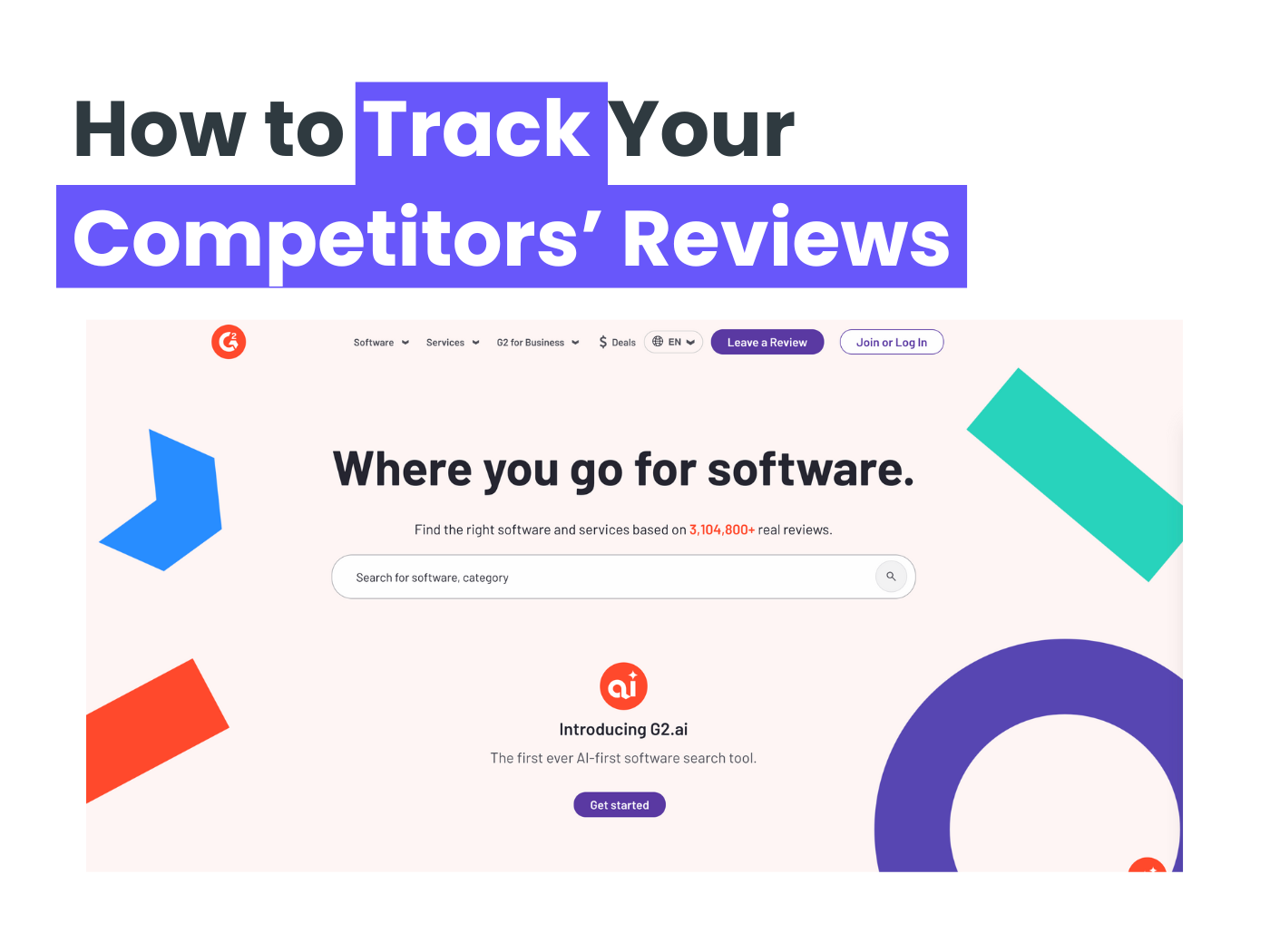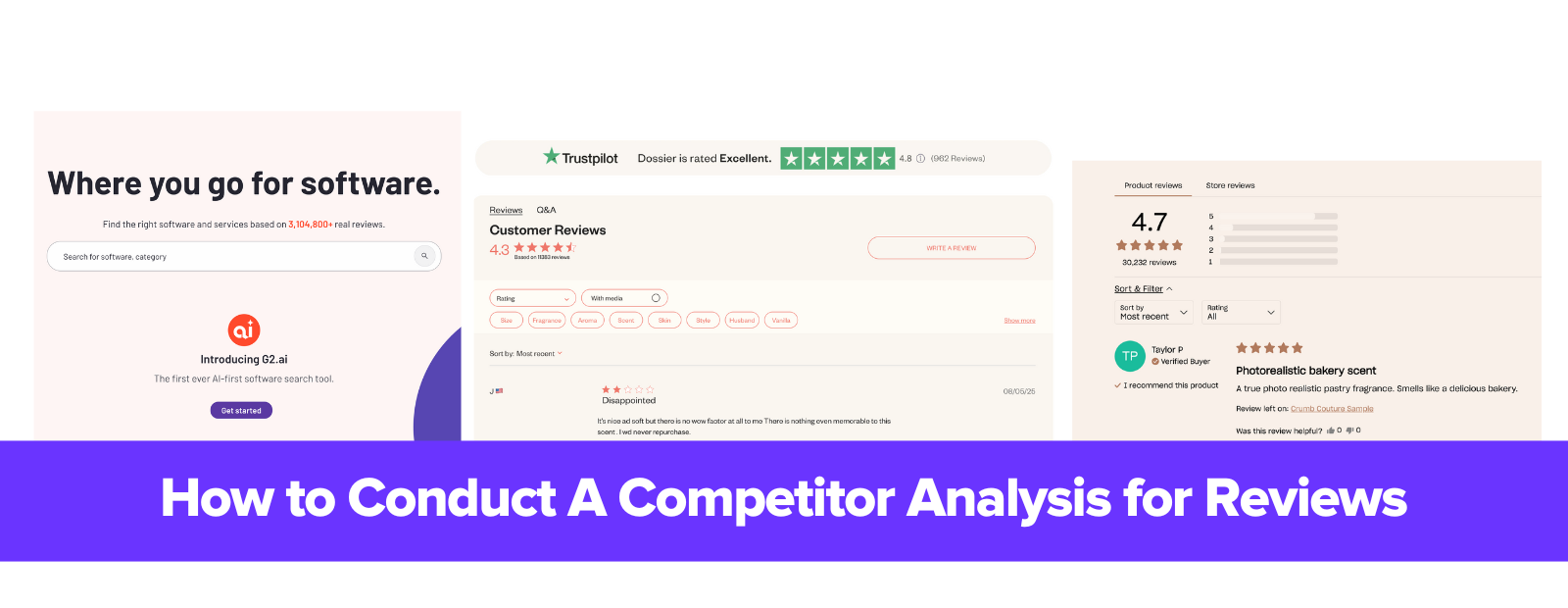When someone is scoping out a product or service, their first resort is to check out online reviews. Reviews hold power, especially since we hold the wisdom of the crowd in high regard.
However, reviews aren’t just relevant to comparison shopping. In competitor analysis, reviews are a rich source of information that you can use for your business.
Let’s discover why tracking competitors’ reviews is beneficial and how you can start tracking competitors today.
Why your competitors’ customer reviews are important
A competitor sentiment analysis has a myriad of benefits, namely:
Competitor review tracking identifies unmet needs
No business is perfect. That goes for your competitors too. Your competitors are falling short in some aspect in the eyes of their customers.

Analyzing reviews is a way to figure out what your competitors are missing so you can use it as a differentiator and improve.
Competitor review tracking helps you determine where you fall short
Reviews also reveal what your competitors are doing that you are not, especially if they’re doing them well.
For example, maybe your competitor has a responsive customer service team and reviews consistently praise this about them. That is a point of improvement for your business.
Competitor review tracking can improve your product or offers so they meet customer needs
Customer reviews can also provide ideas about new products or product lines or how to improve on your existing products.
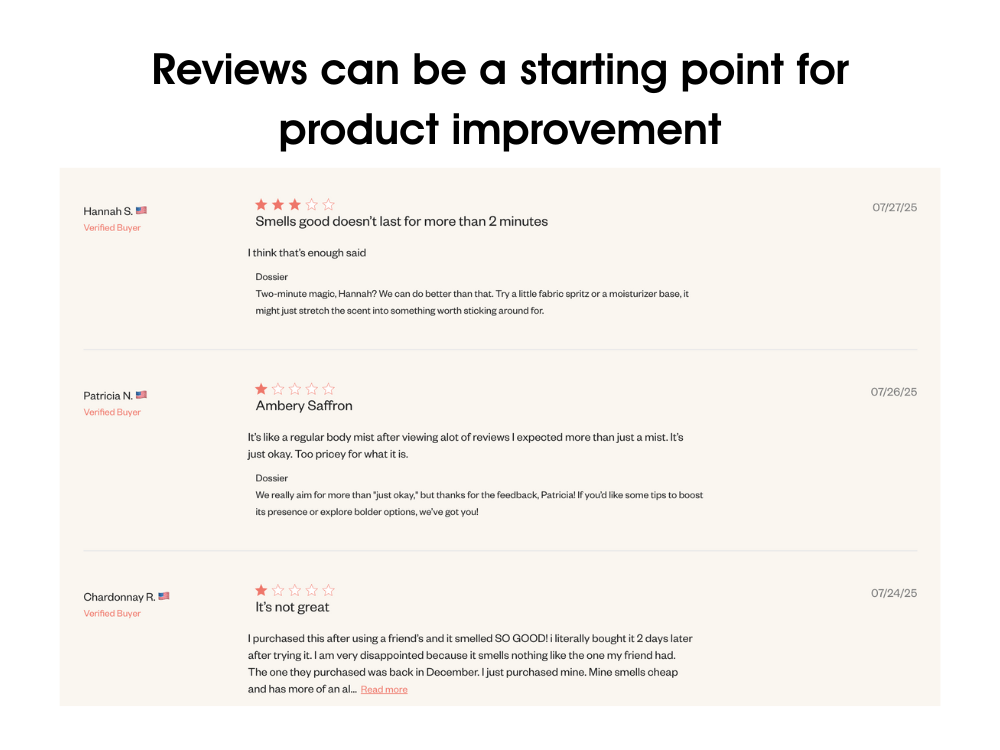
For example, if you observe customers complaining about your competitor’s returns process, you can present yourself as a superior option by simplifying returns and highlighting that in your marketing.
How to Monitor and Analyze Your Competitors’ Reviews
Step 1: Collect reviews
To conduct a competitor analysis based on reviews, you first have to track your competitors’ reviews, preferably regularly and over time. This gives you a better source of data to pull from and improve your marketing.
The question now is where do you find your competitors’ reviews?
If you are in ecommerce, your competitor will most likely have reviews on their website or online shop. While you can’t be sure that they are all genuine reviews, you have to look at both positive and negative reviews for insights.
Analyzing reviews is a way to figure out what your competitors are missing so you can use it as a differentiator and improve.
Secondly, for ecommerce, you can visit your competitor’s social media profile, whether it be Instagram, Facebook, LinkedIn, and the like, and check their comments section. A lot of customers will give feedback through comments, so this can be a great source of information, too.
Aside from those, most B2B and SaaS platforms can be reviewed on trusted review sites like Trustpilot, G2, and Capterra.
Trustpilot
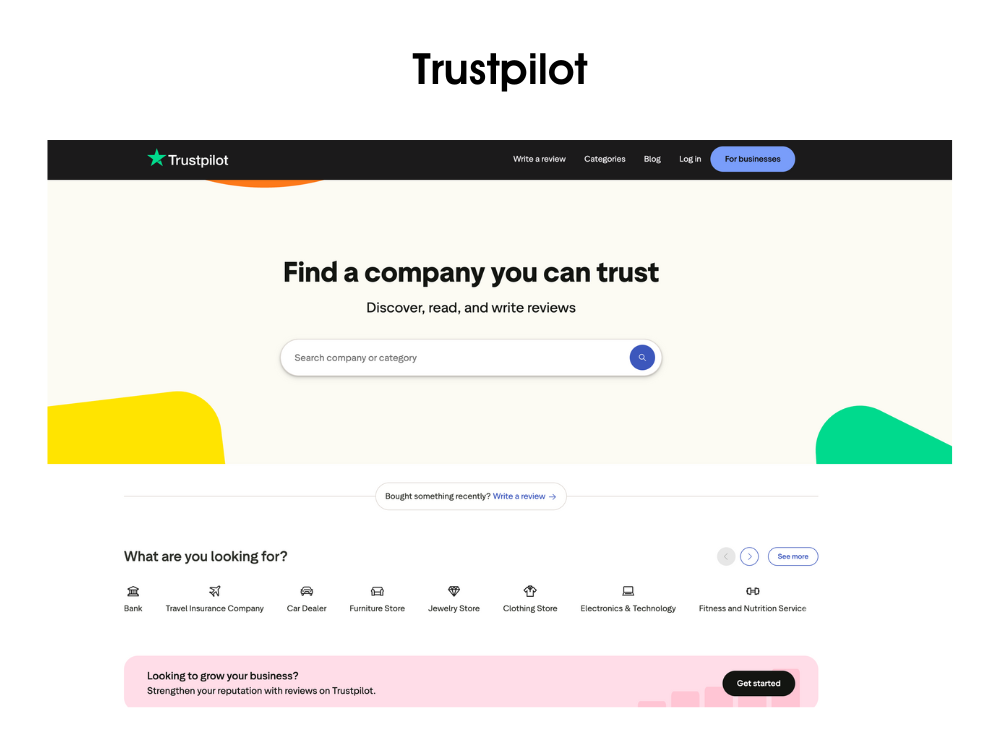
Trustpilot is the ultimate source of real reviews on businesses of all sizes, from up-and-comers to established brands. It spans six countries and has millions of verified reviews.
G2

G2 is a review aggregator website that focuses on software products. It’s easy to set up a profile on G2, which appeals to a lot of SaaS companies and reviewers alike.
Capterra
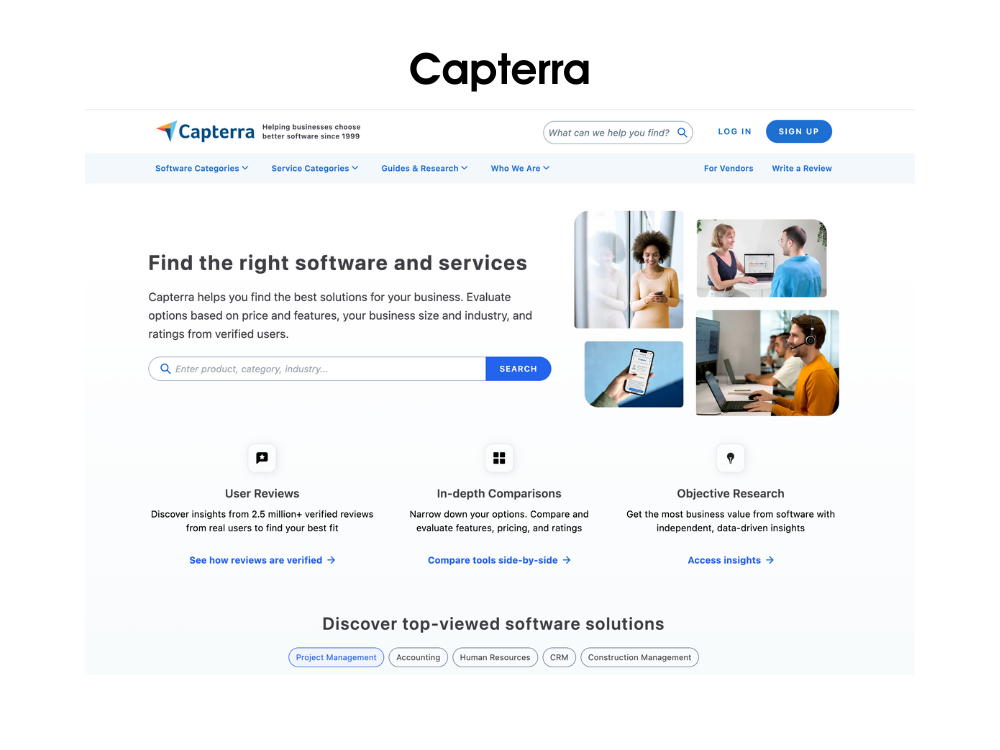
Capterra by Gartner is another well-regarded software review platform with free and paid plans. They have over 400 categories and provide buyer guides to assist customers in finding the right solution for their business.
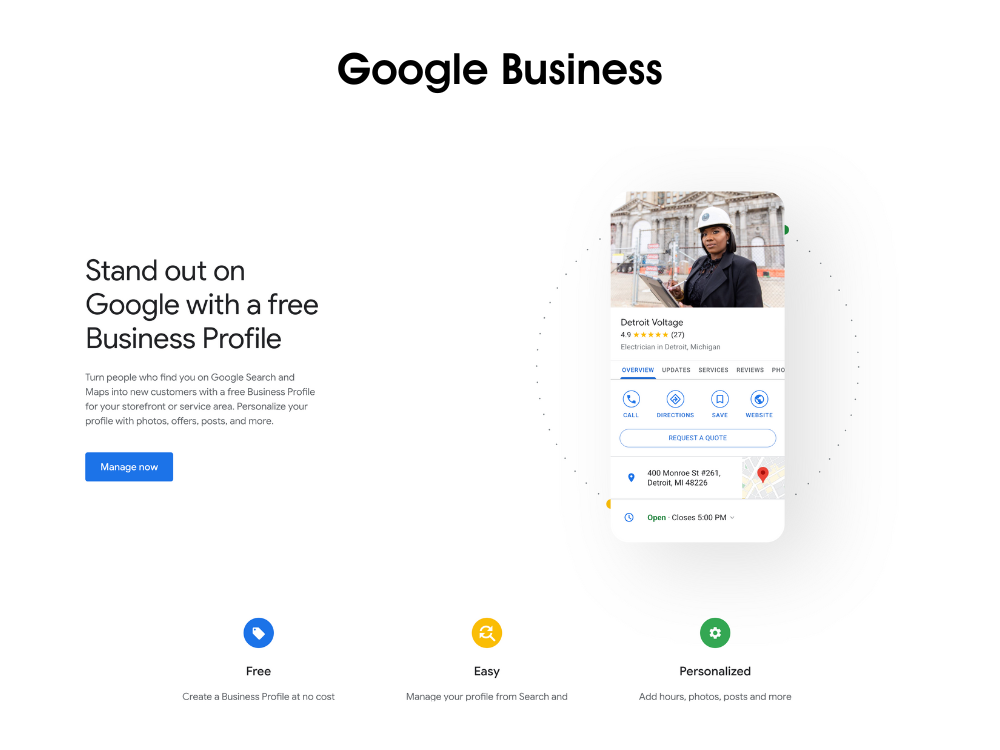
If you have a brick-and-mortar shop or in-person store, you and your competitors are probably already have a Google Business profile.
This profile makes your brand visible on Google search and Google Maps. Consumers can leave starred reviews on a listed business, so it’s a good source of information on your competitors as well.
Social Media
Reviews can readily be found on social media. Sites like Facebook have a dedicated reviews section on business pages. Meanwhile on Instagram, you can find user feedback in the comments section of a brand’s posts.
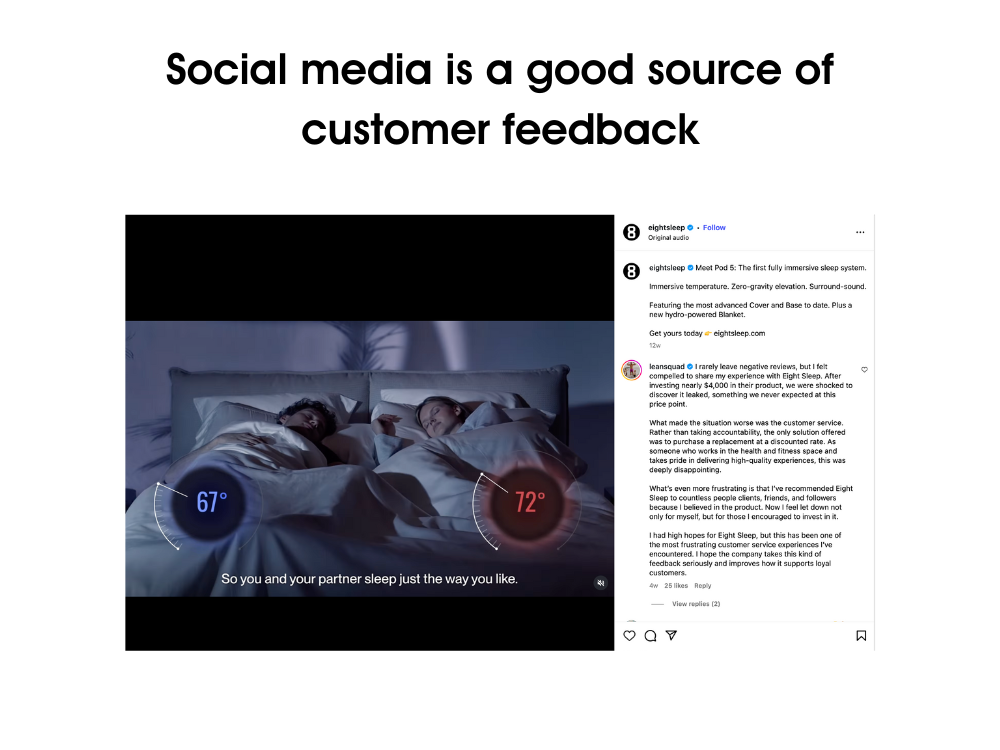
These reviews are not aggregated formally, but they are still worth checking because they often contain real, unfiltered insights on your competitors’ products.
Step 2: Extract actionable insights
After collecting information, you need to get actionable insights from your competitors’ reviews. The simplest way to do this is through a SWOT analysis.
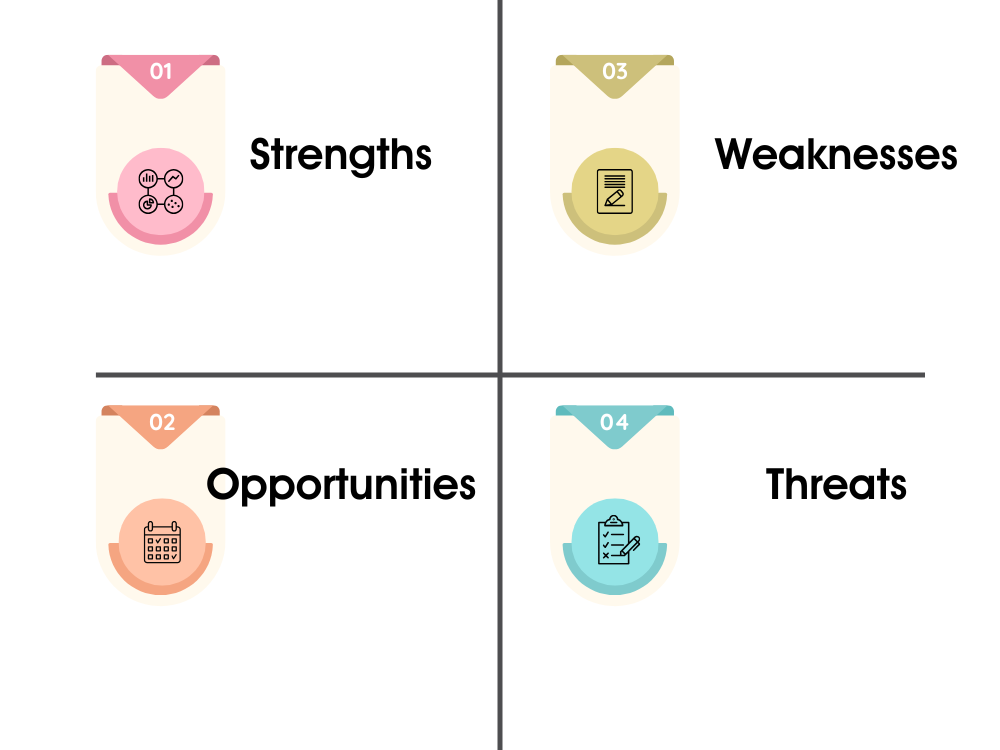
A SWOT analysis is a competitor analysis and strategic planning framework that you can use to assess your competitive advantages and disadvantages. It also pinpoints your strengths, weaknesses, opportunities, and threats relative to your competitors.
You can use SWOT analysis for different parts of your business, including product, customer service, and marketing. Here, we will focus on SWOT for competitor reviews in particular.
Based on the reviews you have, determine the following:
Strengths: What do customers say are your strengths? What do you excel at from their perspective? For example, this could be a fantastic in-store shopping experience.
Weaknesses: What do customers say are your weak points or points for improvement? For example, this could be a clunky UI or poor customer service.
Opportunities: What opportunities can give your business a great advantage over your competitors? Opportunities are external factors such as global trends and tariffs, for example.
Threats: What are things that can threaten your business? Threats are external factors or events that are outside your business’s control. For example, these can include the rise of AI and new entrants to your market.
A SWOT analysis is just the starting point for concocting a plan to improve. It also requires you to confront the flaws your business has and the strengths of your competitors.
Discover your competitive strengths and take advantage of opportunities with our free SWOT analysis template.
Step 3: Come up with a plan
After you’ve listed down your strengths, weaknesses, opportunities, and threats, you can start analyzing your information.
Think about two things:
- How you can use your strengths to leverage opportunities
- How to solve or minimize your weaknesses and equip yourself against threats
It also helps to make a SWOT analysis for each competitor to really dial in on what needs to be done.
Based on your analysis, come up with a plan: set goals for the following quarter or year and work out a timeline for achieving them.
Track and analyze competitor reviews today
Hopefully, you now realize the critical role of tracking competitor reviews for business growth and are now armed with a clear process for doing so.
Start monitoring your audience’s sentiments about your competitors to identify what gaps you need to fill and how you can refine your products and services to meet your customers’ needs.
At the end of the day, it’s all about keeping agile and competitive.
Ready to unlock these powerful insights for your business? Start tracking your competitor reviews with Panoramata today.
FAQs
Why are competitor customer reviews important?
They offer valuable insights into customer sentiment, unmet needs, and areas where competitors excel or fall short, which can inform your business strategy.
Where can I find competitor reviews?
Reviews can be found on competitors' websites, social media profiles, and dedicated review sites like Trustpilot, G2, Capterra, and Google Business Profiles.
How do I extract actionable insights from reviews?
A SWOT analysis (Strengths, Weaknesses, Opportunities, Threats) is a simple and effective framework for processing review data into actionable strategies.


